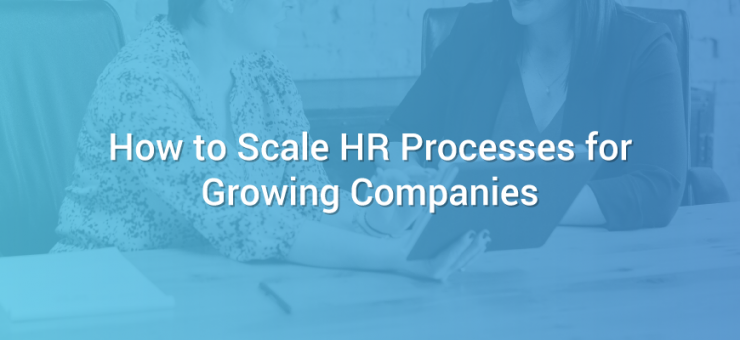You start out as a one-person show or with just an employee or two. But as your company grows, you need to make sure that your processes and tools grow along with you. Human resources is just one area you need to ensure keeps pace with your ever-expanding needs. Follow these 5 steps to get ahead.
1. Refine Your Recruiting
Your first employee might have been your third cousin, Ned, but now you need more sophisticated channels for finding your next hire than the family tree. Job boards and Craigslist can be great channels for finding talent and don’t overlook industry-specific job posting sites like Dice (technology) or HealthCare Source (healthcare).
Also consider whether you want to handle your own recruiting or not. If you don’t feel adept at the process or simply don’t have time for it, hiring a recruiter could be a great way to get access to highly-qualified candidates without weeding through hundreds of resumes.
No matter where you recruit from, make sure you have clearly-defined job descriptions so that you accurately hire for the role. Hang onto these and then revamp them when you rehire for a given position.
Also realize that the more people you hire, the more different generations you’ll be dealing with. Understanding that, recruiting Millennials might need to look slightly different from recruiting Gen Xers ensures you put your company in the best light for every generation.
2. Nail Down the Onboarding Process
You might have hired your first few employees without a real onboarding plan, but the more you grow, the easier the early days will be if you have processes clearly defined.
Create hiring packets that include all the information a new hire needs for their role, including employee handbook, benefits information, policies, and procedures. Give them an option to fill out the necessary paperwork from home before they start so they can hit the ground running.
Because so much of the onboarding process is identical for each new employee, you’ll save yourself a ton of time by streamlining the processes and documents.
3. Get a Training Plan
After that smooth onboarding process, you’ll want an easy and effective way to train new employees. While hands-on training is imperative for pretty much any role, a learning management system (LMS) can help facilitate that training.
The beauty of LMS is that employees can study and train on modules of their roles at their convenience. You can reinforce learning with quizzes at the end of each section and include interactive features to keep them engaged.
The best part? You can reuse these modules for any role. You can also use LMS for ongoing professional development for employees who are looking to earn a promotion or step into a new role. It’s a great perk of working for your company if an employee knows they have the opportunity to grow their career with you!
4. Hire a Dedicated HR Team
If you started out as the business owner managing the minimal human resources tasks, that solution won’t sustain itself for long. Rather than juggling hiring and training on top of your other responsibilities, get smart and hire an HR manager to take over those tasks. As your company grows, you might even need to expand the department… and that’s a good thing!
5. Focus on Retention
Just as important as finding and training the right people is keeping them around long-term. Motivated and engaged employees will work hard for your business for years, but it takes effort on your part to ensure that your staff is happy.
Check in with each employee regularly to make sure they’re able to do their job effectively, and that they don’t have any issues impeding their work. Offer opportunities for advancement, as well as that professional development mentioned earlier so that they have room to stretch their wings in your company.
When employees do quit, sit down with them for an exit interview to understand the reason. While it may be beyond your control (they are moving to Texas), you may find out interesting details about team dynamics or building frustration among your staff that you can then work to remedy to keep others from jumping ship.
Change and growth are good, but they require a bit of flexibility and attentiveness to manage well. Establish processes to make recruiting, hiring, training, and keeping your employees easier, and your HR department will run like a well-oiled machine!
About the Author
 Christine Soeun Choi is a digital marketing associate at Fit Small Business. Currently based in NYC, she has a background in business studies and math with a passion for business development. Outside of work, Christine enjoys taking photos, exploring artwork, and traveling.
Christine Soeun Choi is a digital marketing associate at Fit Small Business. Currently based in NYC, she has a background in business studies and math with a passion for business development. Outside of work, Christine enjoys taking photos, exploring artwork, and traveling.











